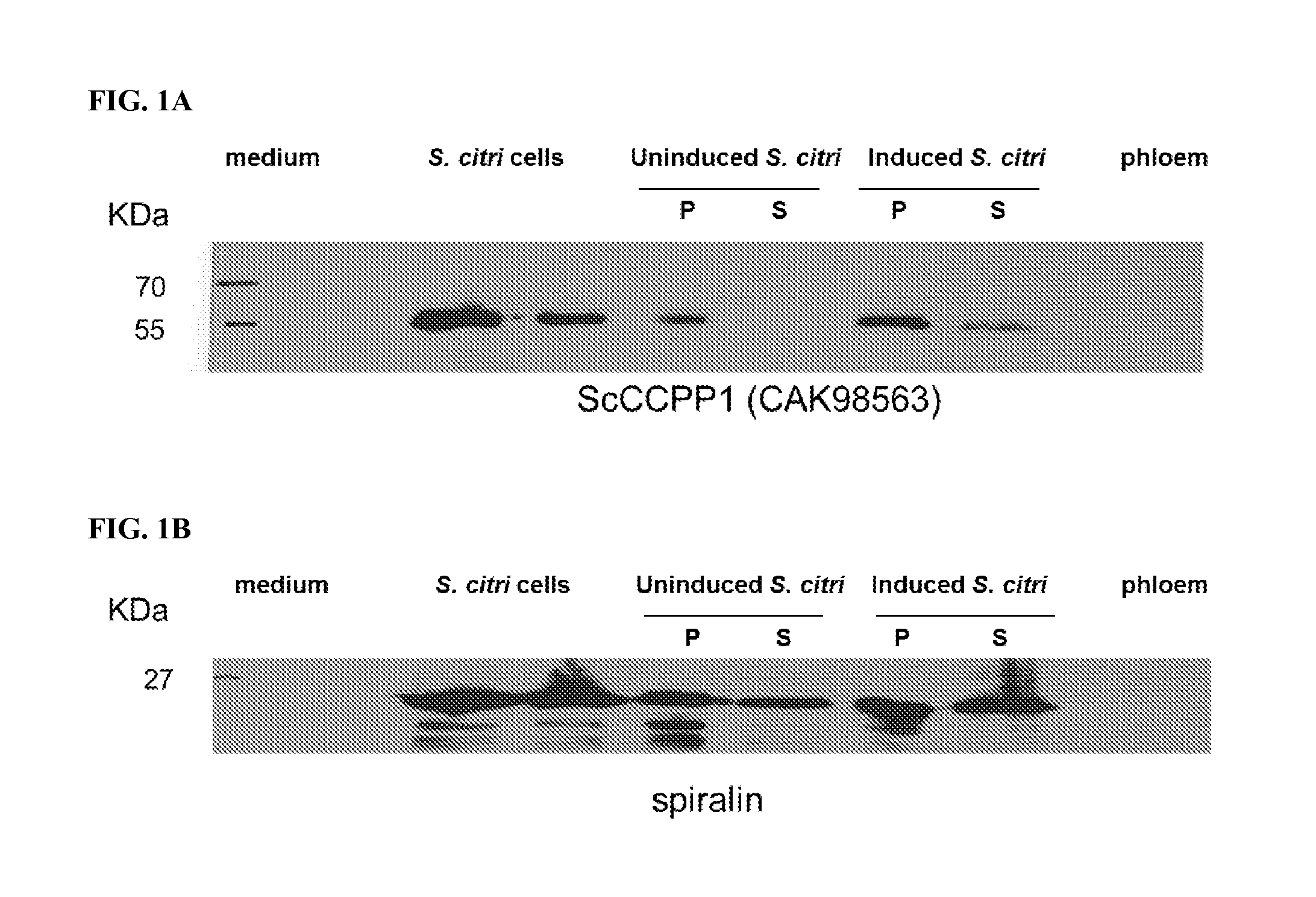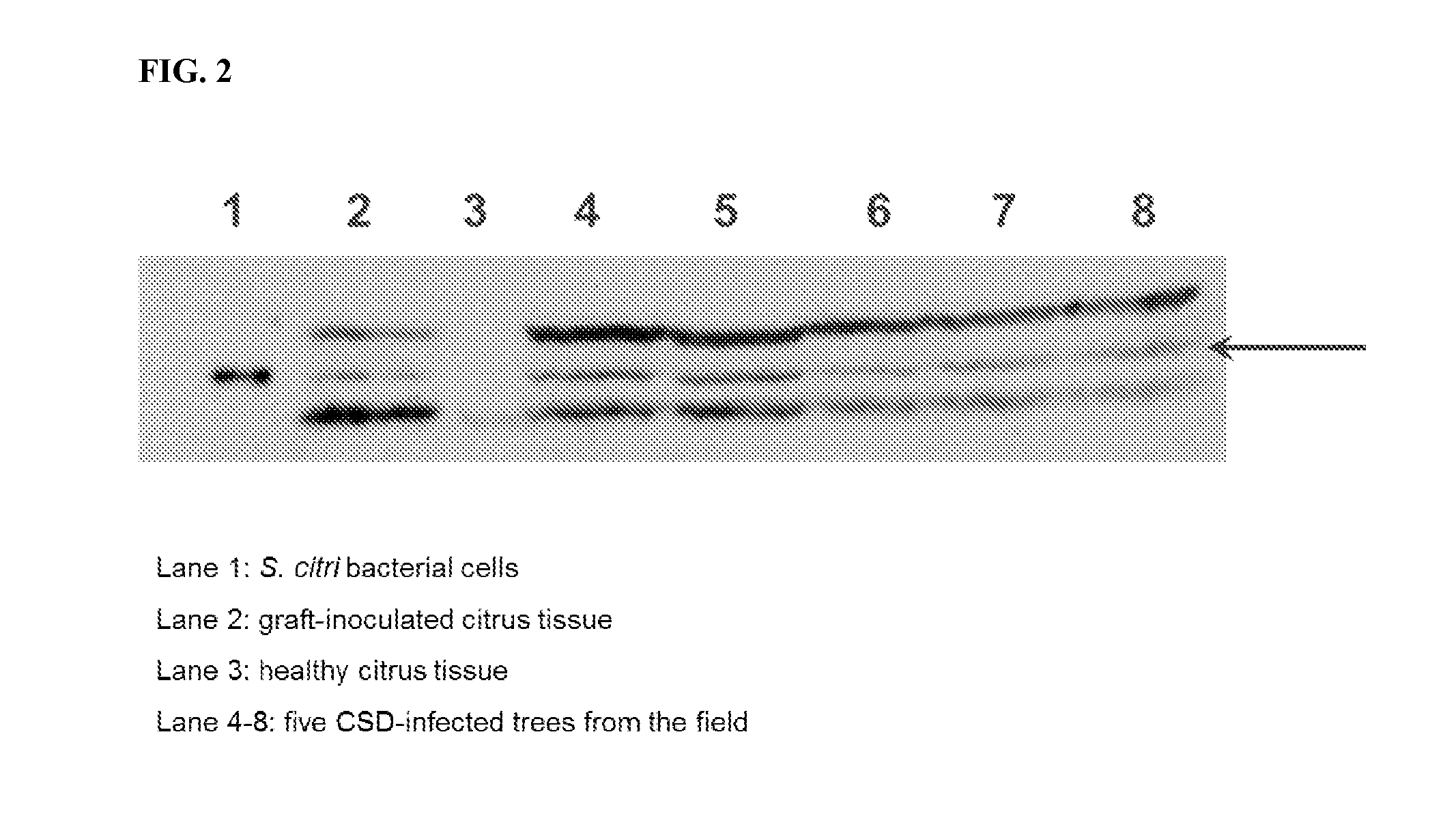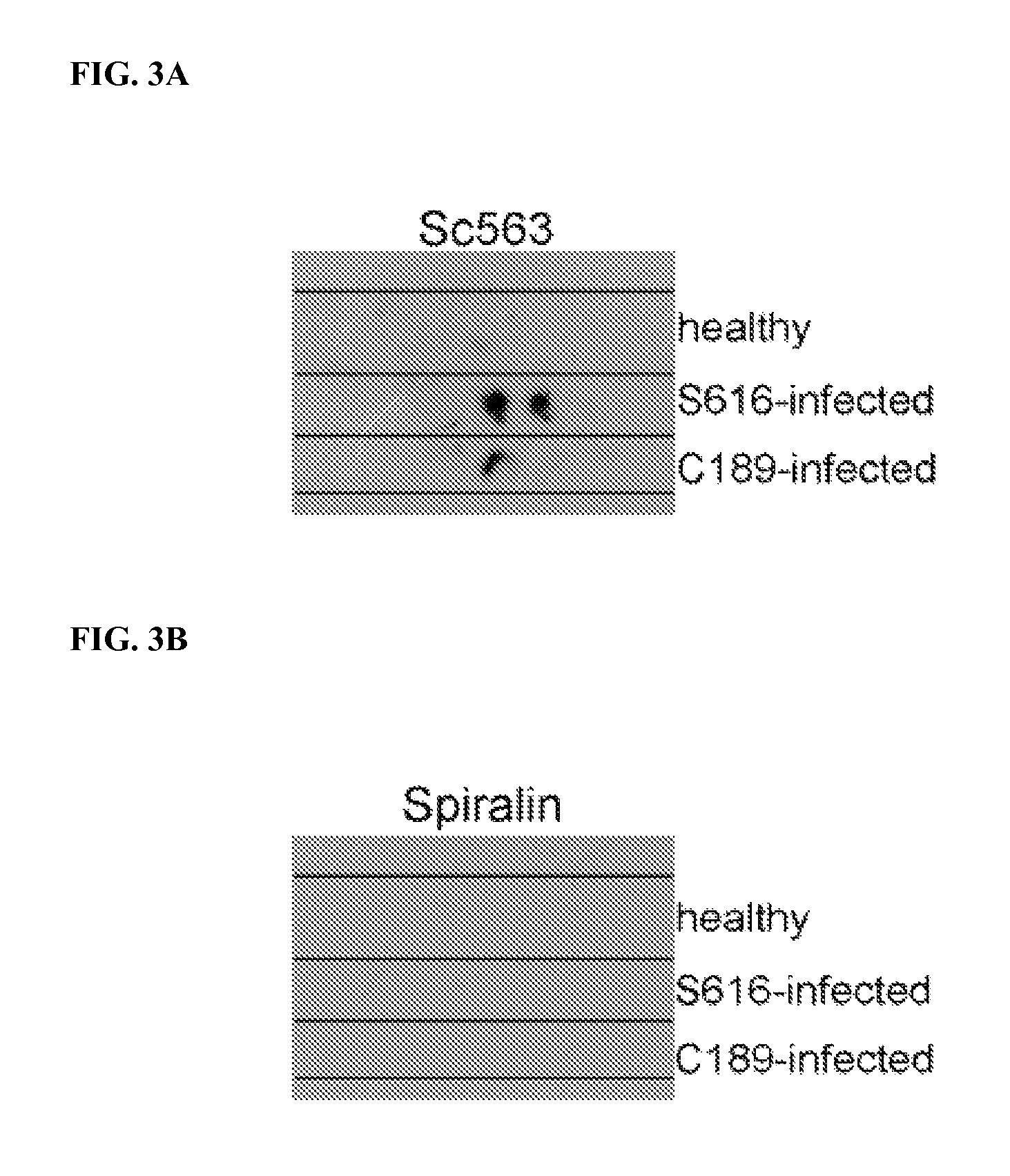Identification of secreted proteins as detection markers for citrus disease
a technology of secreted proteins and citrus disease, which is applied in the field of identification of secreted proteins as detection markers for citrus disease, can solve the problems of liberibacter /i>cells with extremely uneven distribution in infected trees, the threat to the citrus industry is huge, and the diagnosis of these diseases is difficul
- Summary
- Abstract
- Description
- Claims
- Application Information
AI Technical Summary
Benefits of technology
Problems solved by technology
Method used
Image
Examples
Embodiment Construction
I. Introduction
[0025]Methods for serologically diagnosing CSD using S. citri-specific secreted protein or HLB using C. liberibacter-specific secreted protein in a sample are provided. Bacterial pathogens secrete effector proteins into their hosts during infection. These effectors are usually unique for specific pathogen species or even subspecies. It has been discovered that secreted effector proteins can be used as detection markers for diagnosis of bacterial diseases. Antibodies generated to specifically recognize suitable effector proteins can be used to develop serological detection methods such as enzyme-linked immunosorbent assay (ELISA) and imprint detection. The method described herein is particularly efficient for detecting disease in trees where detection of pathogens using nucleic acid-based methods, such as polymerase chain reaction, is challenging due to the uneven distribution of the pathogens in the infected trees. Furthermore, many bacterial pathogens reside in plant...
PUM
| Property | Measurement | Unit |
|---|---|---|
| temperature | aaaaa | aaaaa |
| acid | aaaaa | aaaaa |
| paramagnetic | aaaaa | aaaaa |
Abstract
Description
Claims
Application Information
 Login to View More
Login to View More - R&D
- Intellectual Property
- Life Sciences
- Materials
- Tech Scout
- Unparalleled Data Quality
- Higher Quality Content
- 60% Fewer Hallucinations
Browse by: Latest US Patents, China's latest patents, Technical Efficacy Thesaurus, Application Domain, Technology Topic, Popular Technical Reports.
© 2025 PatSnap. All rights reserved.Legal|Privacy policy|Modern Slavery Act Transparency Statement|Sitemap|About US| Contact US: help@patsnap.com



